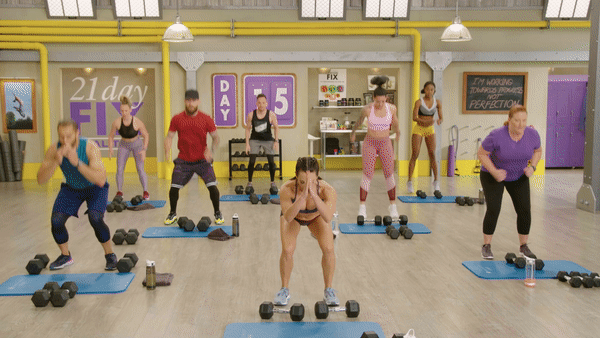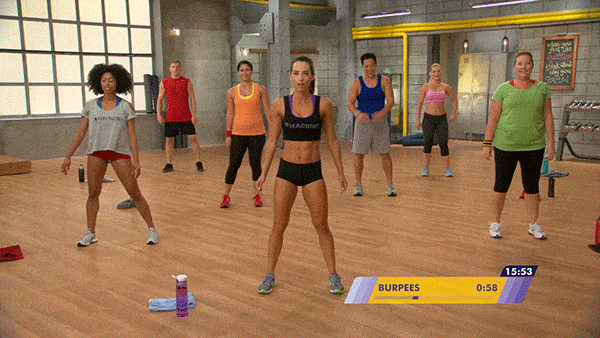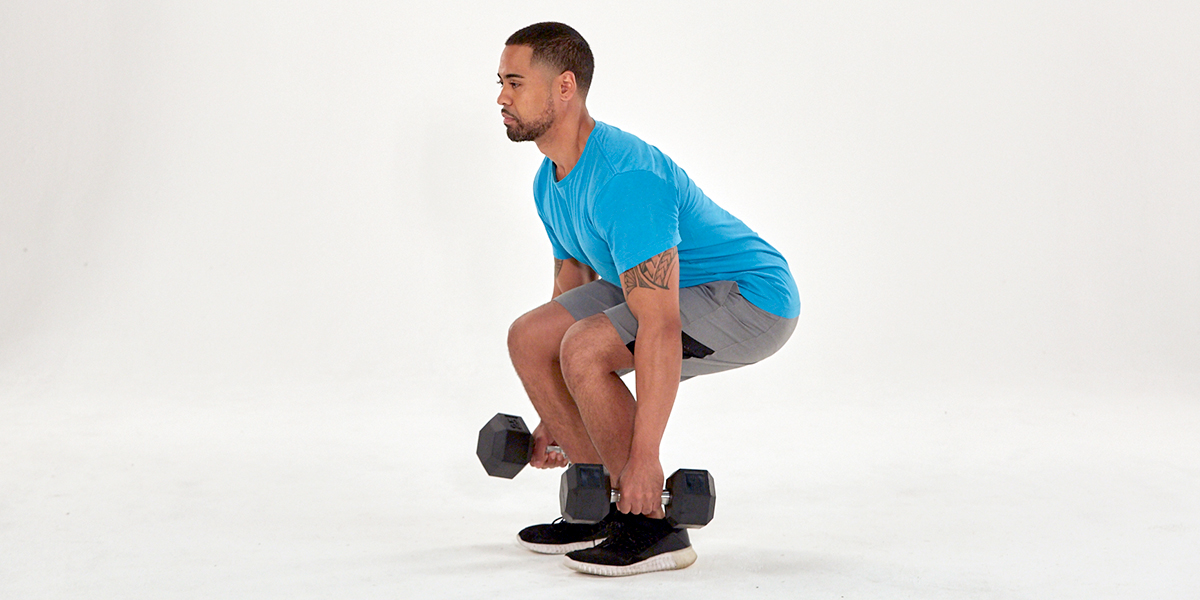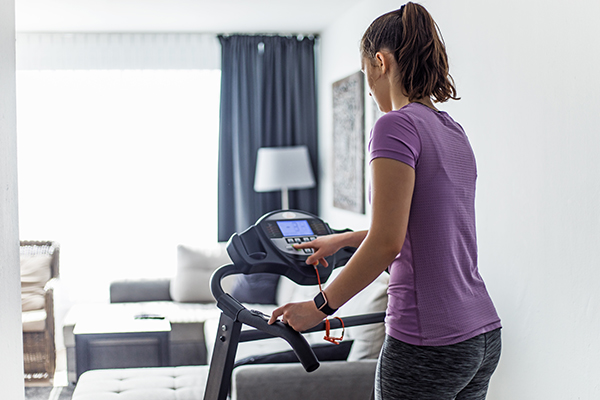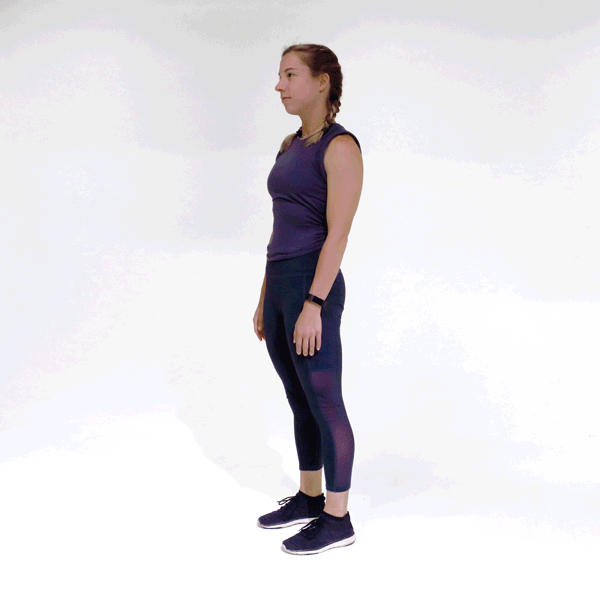Build Strength and Endurance Simultaneously With Circuit Training
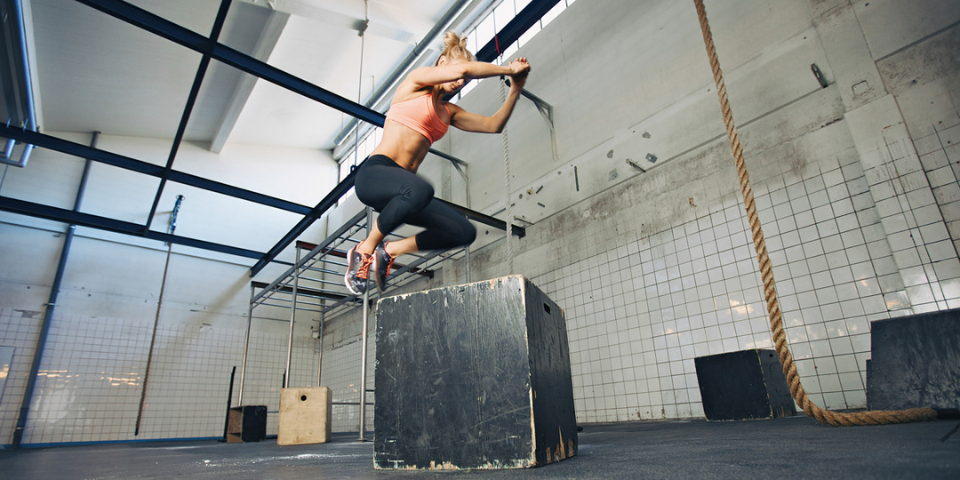
If you’ve ever taken a group fitness class or done an online workout program, chances are you’ve done some form of circuit training.
A great way to mix cardio and strength training into one effective routine, circuit training packs a lot of work into a short period of time — and you often don’t even need any equipment.
It can also be an effective boredom-buster, since you can switch things up easily with so many different exercises.
So what exactly is circuit training? How many calories can it burn? And is circuit training good for weight loss? Here’s what you need to know.
What Is Circuit Training?
“Circuit training involves performing multiple rounds of several back-to-back exercises with brief periods of rest between rounds,” explains Trevor Thieme, C.S.C.S., BODi’s executive director of fitness and nutrition content.
For example, a circuit workout could entail performing all reps of the following exercises back-to-back, resting two minutes between rounds for three rounds:
- Jumping lunge: 8 reps/leg
- Push-up: 8-10 reps
- Squat: 10 reps
- Toe taps: 20 reps
- Side plank: 20 seconds/side
If you’re crazy busy, circuit training is a great way to maximize your efficiency, since it helps improve both strength and cardiovascular fitness in one workout.
And you can make it even more efficient by sequencing your exercises so you work one body part or muscle group while you rest another, Thieme says — for example, you could alternate between lower-body, upper-body, and core exercises.
Or you might want to incorporate some bodyweight cardio exercises into your workout.
Circuit training vs HIIT
Circuit training differs slightly from high-intensity interval training (HIIT) in that the work periods in HIIT are usually shorter and more intense, plus there’s a stronger emphasis on cardio in interval training, Thieme says.
How Often Should You Do Circuit Training?
If you design your own circuit training routine, Thieme recommends working out three to four days a week. If you have a personal trainer or follow an online program with streaming workouts, you can circuit train up to six days a week.
“That’s because a smart trainer or well-designed online program will manage fatigue — not just during individual workouts, but also throughout each training week — allowing you to exercise almost every day without increasing your risk of overtraining,” he explains.
Circuit Training for Weight Loss
If your goal is to lose weight, circuit training may help. “Any workout that challenges your muscular or cardiorespiratory systems can help you shed fat, and circuit training challenges both,” Thieme says.
In one study, researchers divided 58 middle-aged overweight men into three exercise groups: One did high-intensity circuit training, one did low-intensity circuit training, and the last did traditional endurance training.
Each group worked out three times a week for 50 minutes. After 12 weeks, both circuit-training groups lost significantly more weight than the endurance group, and the high-intensity exercisers lost significantly more fat than the other two groups did.
And you don’t need a gym to see weight-loss results: Research suggests high-intensity circuit training using only bodyweight exercises like squats, push-ups, and planks can decrease body fat.
One driving factor of weight loss through circuit training is oxygen. Your muscles need oxygen to perform, and because circuit training works multiple muscle groups, you need more oxygen — and your calorie burn increases.
According to Harvard Medical School, in a 30-minute circuit training workout, a 155-pound person burns 298 calories.
And circuit training can also increase excess post-exercise oxygen consumption (EPOC), which means you continue to burn calories after your workout is over.
7 Circuit Training Exercises to Try
So what are the best circuit training exercises? Actually, just about any exercise can count as circuit training — as long as your workout is structured correctly.
“Circuit training is less about exercise type and more about workout design,” Thieme explains. “As long as you perform more than three exercises back-to-back, you’ve got yourself a circuit.”
Here are a few ideas for exercises to incorporate into your circuit training workout.
1. Jump squats
- Stand with your feet shoulder-width apart. You can use just your bodyweight, or hold a weight at your chest.
- Keeping your chest up, core engaged, and back flat, push your hips back and lower your body until your thighs are parallel to the floor.
- Push yourself back up explosively, jumping straight up.
- Land softly, lowering yourself immediately into your next rep.
2. Burpees
- Start by standing with your feet hip-width apart.
- Push your hips back, bend your knees, and place your hands on the floor in front of you.
- Jump your feet back into a push-up position, and then jump back to a squat position.
- Explode up, reaching overhead as you jump off the floor.
- Land softly, and immediately begin your next rep.
3. Skipping
Skip in place, jump rope, or do skater hops for a minute between the other exercises in your circuit.
4. Dumbbell squats
- Stand with your feet hip- to shoulder-width apart, holding a pair of dumbbells at arm’s length by your sides.
- Keeping your back flat and core tight, push your hips back, bend your knees, and lower your body until your thighs are parallel to the floor.
- Pause, then push yourself back up to the starting position.
5. Treadmill running
Run on a treadmill for two minutes between the other exercises in your circuit.
6. Squat thrusts
- Start by standing with your feet hip-width apart.
- Push your hips back, bend your knees, and place your hands on the floor in front of you.
- Jump your feet back into a push-up position, and then jump back to to a squat position.
- Quickly return to standing and begin your next rep. (A squat thrust is similar to a burpee, but without the explosive jump at the end of each rep.)
7. Tuck jumps
- Stand with your feet shoulder-width apart.
- Drive your arms up toward the sky and lift your knees toward your elbows as you jump as high as you can.
- Land softly, and immediately begin your next rep.



